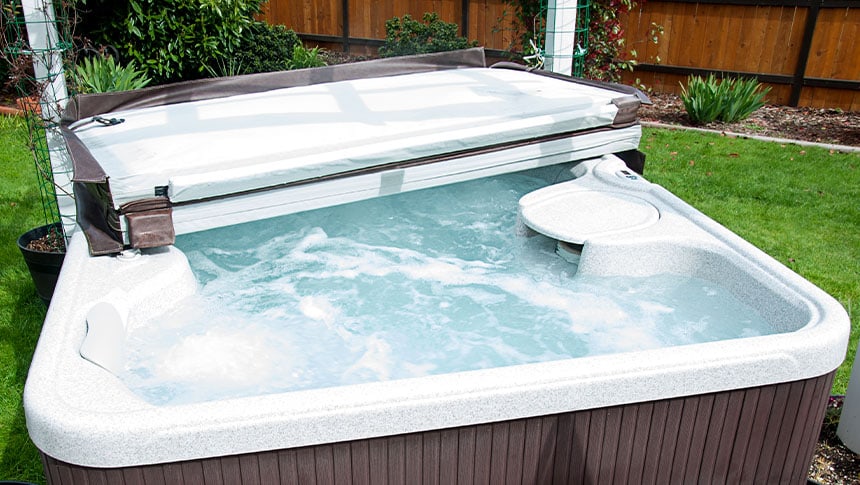Whether you already have a hot tub cover or you’re in the market for a new one, it’s good to know how to get the most out of your at-home spa and ensure you’re not wasting energy. Most hot tubs come with a standard cover that may not be of premium quality. Not only will a high-quality hot tub cover keep the heat inside your tub and your hot tub heating costs low, it can also save you money in the long run by protecting your heating system and pumps from being overworked.
What to look for in a hot tub cover
- When looking for a hot tub cover, pay attention to the R-value. The R stands for resistance to heat flow. The higher the R-value, the longer the heat will stay inside the spa.
- Standard spa covers have an R-value below 12 (R-12). An efficient cover has a rating of R-12 or greater, with a minimum thickness of 2 inches at all points (including the hinge if applicable). The manufacturer’s description for the cover should state the thickness, or you can measure with a ruler if that information isn’t provided.

When to replace your hot tub cover
- If it’s old. A premium hot tub cover should be replaced every 7–9 years (that’s 2–4 years longer than a standard cover).
- If it’s damaged or broken. Whether it’s exposure to harsh weather, or deterioration from excessive chlorine levels, there are many ways your sauna cover can become damaged to the point of requiring replacement. Sometimes water can get trapped in the foam and the cover can become waterlogged, creating an environment ripe for mold and mildew. To prevent this from happening, air out your cover twice a week by unzipping the zippers at the end of the cover to let accumulated moisture evaporate. To address mold and mildew, refer to the manufacturer cleaning guidelines. Common cleaning methods include removing the vinyl cover from the foam pieces, spraying both the cover and foam with mold inhibitor then letting it dry before reassembling.
- Poor insulation. Some of the more standard covers are made of a flat foam with poor insulation capabilities and a low R-value. If your cover is below R-12 a more efficient cover will save you money and last longer.
- Poor fit. A hot tub cover that was not built specifically for your hot tub or a cover with edges that don’t align with the perimeter of the hot tub can cause heat loss, become susceptible to damage and be dangerous for children or animals who might fall in if the cover moves easily. Replacement hot tub covers are always custom made to fit the exact dimensions of your hot tub and you will need to take measurements before purchasing.
Upgrade your hot tub cover
You may be eligible to receive an Energy Trust incentive for your upgraded cover.



